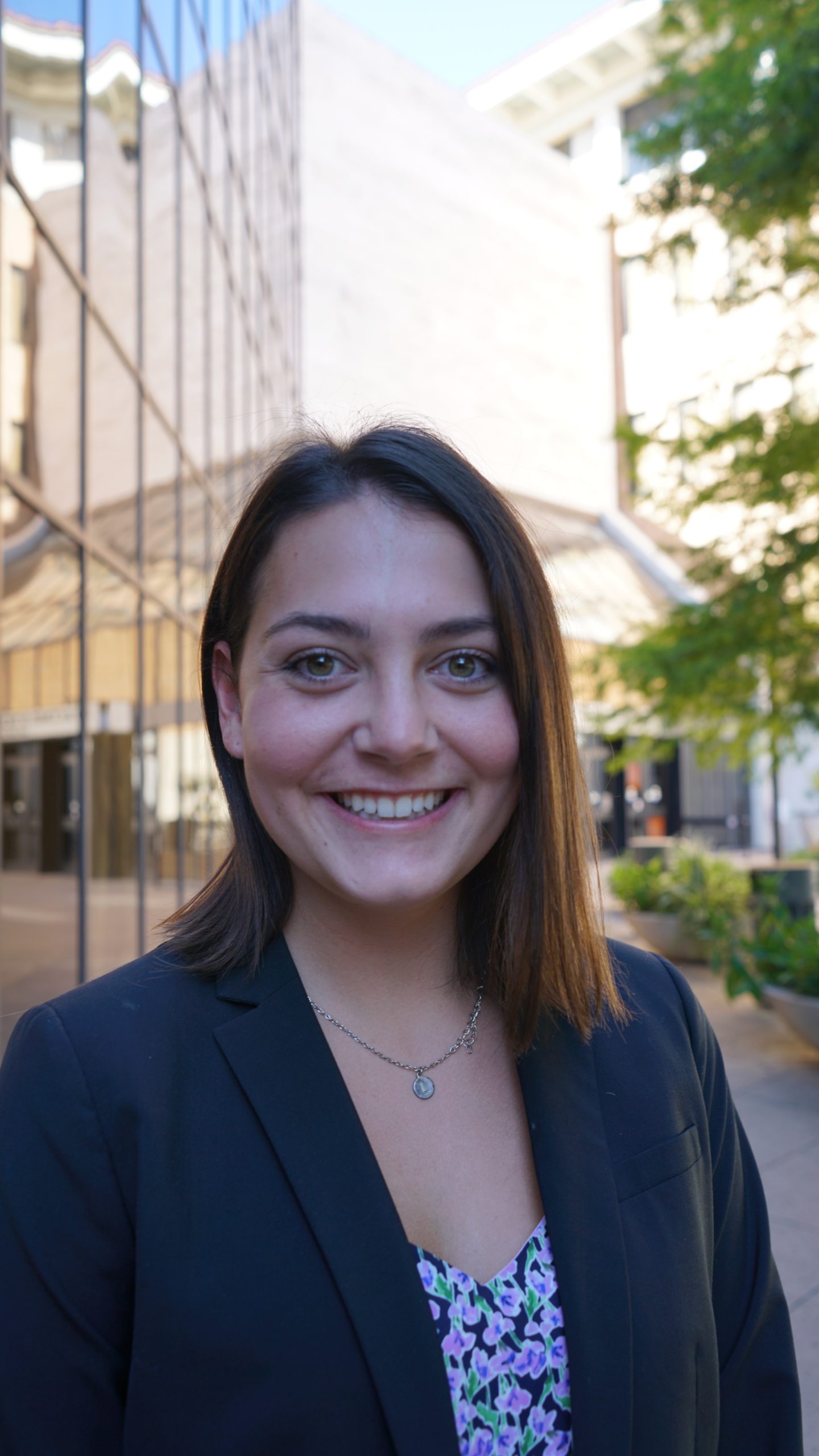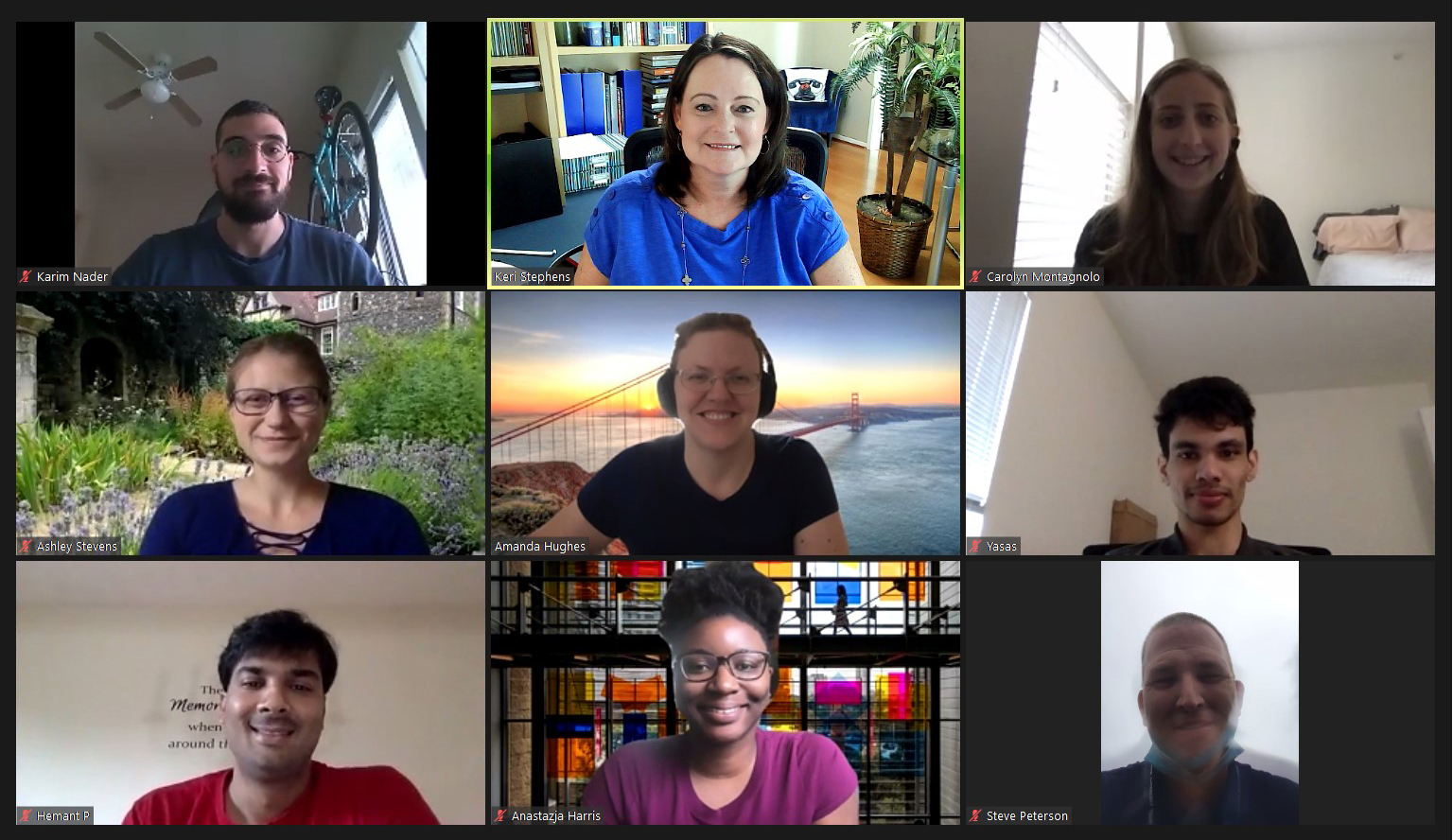HAT team introduction

Lane Capps
2020/08/19

Here at the OpticLab at the University of Texas at Austin, we have a great team of people from all different backgrounds and interests working on the Human-AI teaming project. The variety of perspectives and strengths in our team members creates a great work environment and has spurred wonderful insights. Check out our NSF Human-AI Teaming Project blog post to learn more about the HAT project. Today we will introduce lab members: Ashley Stevens, Yasas Pramuditha Senarath Wijesuriya Arachchige, Anastazja Harris, and Karim Nader.
Ashley Stevens works with Dr. Amanda L. Hughes, Information Technology & Cybersecurity, at Brigham Young University. Ashley got her bachelor’s in English Linguistics, then spent two years working as a user-experience designer, and is now pursuing a degree in information technology (IT). She is a computer programmer in the office of digital humanities at Brigham Young University. Her role in the HAT team involves interviewing, transcriptions, and their validity, and she helps with qualitative coding. She is excited about working on this project because it is like nothing she has ever done before. Working with CERT volunteers has been a joy for her and she is enthused by the passion she sees in the digital volunteers. Also, the HAT team project data will be used in her thesis where she will focus on the computer interface and human-computer interaction. We are very lucky to have Ashley on our team!
Yasas Pramuditha Senarath Wijesuriya Arachchige did his undergrad studies at the Dept. of Computer Science and Engineering at the University of Moratuwa, Sri Lanka. Then, he did his research-based masters in Computer Science concentrating more in the area of Data Mining and Natural Language Processing. Now he is an IT PhD student at George Mason University (GMU) where he works with Dr. Hemant Purohit. His concentration there is Information Sciences and Technology. As part of the HAT team, he fills the developer and Machine Learning (ML) engineering roles. He creates and manages infrastructure for getting the annotations generated by CERT volunteers (related to COVID-19 tweets in the DC area) into the computer system. Also, he creates backend algorithms for identifying relevant and irrelevant tweets. This is the first time he is involved in a project that observes the annotator’s behavior. He is realizing how essential it is to think about the annotator’s wellbeing and the value of having diversity in the annotators. For example, some of the tweets that the annotators were asked code contained profanity. Then his computer backend team decided to replace swear words with placeholders. This has actually removed some emotional burden for some of the annotators. He is most excited about the end result of this project. Eventually, they will be able to identify the most useful information from a vast amount of data (mostly irrelevant to emergency response organizations). Yasas is very grateful to work on this project with such an amazing team.
Anastazja Harris is a doctoral student at the University of Texas at Austin, working with Dr. Keri Stephens, and she is the Optic Lab manager. She got her bachelor’s at the University of North Carolina at Chapel Hill in Psychology, with a second major in interpersonal /organizational communication. Her roles in the HAT team include conducting interviews, analyzing the data from interviews, reviewing the literature, managing weekly team meetings, and much more. Anastazja has enjoyed learning more about how people work together with machines, and how to train the machine to recognize and process information in an efficient way. This project brought to light how humans interact with machines. For example, she said prior to this work, she never considered the use of artificial intelligence (AI) in the hiring process, and that companies often use this approach to scan resumes. That is something she is pursuing for her dissertation. Despite the amazing things technology can do, she is most interested in the team aspect of the HAT project. She loves seeing how humans work together to achieve a goal. The Optic Lab and the HAT team are very fortunate to have Anastazja and her unique perspective on the team.
Karim Nader is a research assistant on the HAT team. He got his B.A. from Columbia University in mathematics and philosophy. He briefly worked in the legal field before starting his Ph.D. at the University of Texas at Austin and works mainly in the ethics of information and technology. He brings in some philosophical and conceptual perspectives into the project. Karim is excited to be involved in the project. To him, everything that they are doing is completely new and different. So he’s learning a lot about the new research methods that he has never used before. The way the team is analyzing the data is also new to him, and it helps him think about his other work differently. Additionally, he thinks what is exciting is seeing the COVID-19 pandemic from an academic perspective. Obviously, we are all thinking about how COVID-19 is affecting our personal lives but when he takes a step back and looks at it through a research lens, it really changes how he thinks about it. As a person who is interested in technology and social media, Karim has taken special notice to how information is disseminated on Twitter, especially when it is so tied up to cultural references, memes, and shared in different lingos and slangs. Karim’s distinctive perspective and hard work has been a real asset to the HAT team.
As you can see our human-AI teaming project members come from a variety of unique backgrounds and they bring interesting perspectives into the project. The interdisciplinary nature of this project creates a special opportunity to have people from different backgrounds working towards a shared goal. More HAT Team project member introductions to come.
Organizing Practices through Technology, Information, & Communication Lab Built with WordPress.
Stay Connected
Join our newsletter to keep up with our latest and greatest posts
Organizing Practices through Technology, Information, & Communication Lab
We are a group of social science researchers who study and teach in the broader area of communication technology. Our primary location is at The University of Texas at Austin in the Moody College of Communication, but we partner and collaborate with people at other institutions.